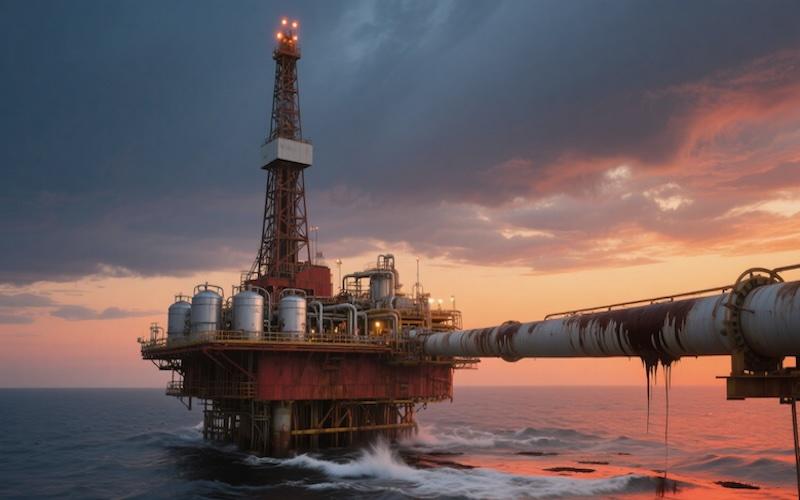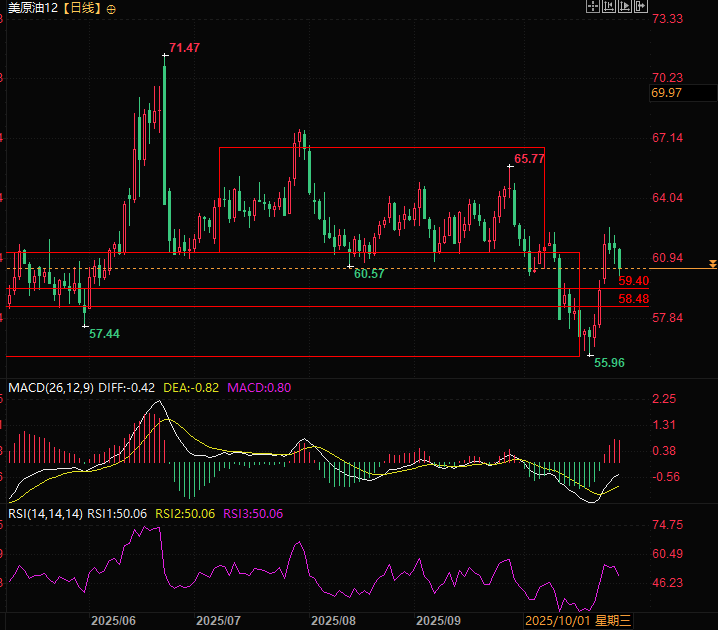The oil price war escalates! The global energy landscape is being reshuffled
2025-10-28 20:52:13
The national average price of gasoline in the United States fell below $3 a gallon for the first time in years, thanks in large part to OPEC+ releasing more crude oil into the market, while weak global demand also played a key role.
But the good times didn't last long. After the United States imposed a new round of restrictions on Russian oil, domestic gasoline prices may soon soar significantly. Currently, oil prices are back above $3.
On the same day, Amin Nasser, CEO of Saudi Aramco, the Saudi state-owned oil giant, said that global crude oil demand remained strong even before the West imposed restrictions on major Russian oil companies Rosneft and Lukoil.
Nasser stated that oil demand will grow by 1.1 million to 1.4 million barrels per day next year. Oil and natural gas will remain important components of the global energy mix for decades to come, and the policy adjustments of various countries reflect a renewed recognition of the importance of hydrocarbon energy.

US oil restrictions on Russia could lead to a surge in domestic gasoline prices
Last Monday, the average national gasoline price in the United States was $2.969 per gallon, 16 cents lower than the same period last year; GasBuddy, a well-known energy data analysis platform, predicts that oil prices may fall further in the coming weeks.
Data from the American Automobile Association (AAA) showed that the average retail price of gasoline had rebounded to $3.07 per gallon last Sunday after the United States launched a new round of restrictions on Russian oil.
At 12:00 noon Eastern Time last Friday, Brent crude oil futures for December delivery were trading at $66.42 a barrel, up nearly 10% from the intraday low of $60.5 a barrel last Monday; during the same period, the December contract price of U.S. crude oil futures rose to $61.94 a barrel from the low of $57.00 a barrel last Monday.
The US and the UK have successively imposed restrictions on Russian energy companies, boosting oil prices
The US government announced new restrictions on Russian energy giants Rosneft and Lukoil on Wednesday, just days after the UK imposed similar restrictions on the companies.
"Given President Putin's refusal to end this senseless war, the Treasury is imposing restrictions on two of Russia's largest oil companies that are funding the Kremlin's war machine," said U.S. Treasury Secretary Scott Besant.
Treasury stands ready to take further action, if necessary, to support President Trump’s efforts to end yet another war. We call on our allies to join us and strictly adhere to these restrictions.”
This development marks a complete departure from the Trump administration's previous logic, in which the US government had always tried to play the role of a neutral mediator between Ukraine and Russia.
Oil prices rise as Trump administration adjusts its logic
Trump has repeatedly threatened to take tough measures against Russia, but has never taken action.
GasBuddy's head of petroleum analysis, Patrick DeHaan, has issued a warning to consumers, reminding them to prepare for rising gasoline prices in the coming days.
De Haan said: "In the next few days, the impact of the restrictions on gasoline prices may begin to appear, and it may take five days for them to be fully transmitted to the terminal retail price." He also added that whether the upward trend in oil prices can be reversed depends on whether Russia or the United States adjusts its stance.
He further pointed out: "These new developments will put pressure on Russia to return to the negotiating table; and if President Trump sees that oil prices have risen to worrying levels, he may also take countermeasures, so I don't think this rise in oil prices will last long."
Institutional View: Oil prices face short-term adjustment pressure but there is a long-term turnaround
Standard Chartered's commodity analysts finally joined the bearish camp, lowering their oil price forecasts for 2026 and 2027 by $15 per barrel. The direct cause of this reduction was the significant movement in the oil price forward curve over the past year.
Standard Chartered Bank raised its forecast for the average Brent crude oil price in 2025 from $61 per barrel to $68.50 per barrel. However, analysts lowered their 2026 oil price target from $78 per barrel to $63.50 per barrel and their 2027 price forecast from $83 per barrel to $67 per barrel. They noted that the crude oil futures curve has entered contango since the beginning of 2026.
Contango refers to the futures price being higher than the spot price, usually reflecting market expectations of future price increases or the current reality of high storage costs; while backwardation refers to the futures price being lower than the spot price, which often indicates strong immediate demand or the market's expectation of future price declines.
Standard Chartered Bank's forecast adjustment shows that oil prices will be weak in the short term, but will show a stable and slow upward trend in the long term.
These commodity experts currently predict that due to the generally negative market sentiment caused by the trade war, tariff uncertainty and concerns about oversupply, oil prices will remain weak in the short term.
However, they maintained their previous forecast that low oil prices will begin to curb the growth of US shale oil production; if OPEC+ continues to release crude oil into the market, this will highlight the tight crude oil supply situation and the geographical concentration of idle production capacity, which should support oil prices in the medium term.
Standard Chartered Bank's forecast of imminent output cuts by U.S. producers is supported by the fact that the cost of producing U.S. shale oil continues to rise due to the depletion of high-quality resources and the industry's need to drill in more speculative areas and formations with more complex geological conditions.
Analysts at energy consultancy Enverus predict that the marginal cost of oil extraction in U.S. shale regions could rise from about $70 a barrel to $95 a barrel by the mid-2030s.
This rising cost trend is gradually forming as the entire industry is shifting from core resources that are easy to extract to resources with lower exploration maturity, which in turn drives up the cost of extraction.
That is, Standard Chartered Bank is bearish on oil prices due to the short-term oversupply of crude oil. However, in the medium and long term, due to the contango of crude oil, the premium of forward contracts and the liquidation of the shale oil industry, although they have lowered the forward target price, the target price for 2026 and 2027 is still rising, which represents its short-term bearish and long-term non-pessimistic attitude towards oil prices.
Technical Analysis:
After the December futures contract of U.S. crude oil rebounded quickly to the upper edge of the box, it began to pull back. The nearest support can be referred to as 59.40, which is the 50% percentile of the negative line on October 10. At the same time, the next support is 58.48, which is the key price level for this wave of oil prices to break through.
The pressure level is 61.27, which is the upper edge of the box itself.
However, this sharp rebound may lay the groundwork for subsequent upward performance of oil prices. After all, facing the liquidation of the shale oil industry and layoffs in the oil industry, it will not be easy to increase production capacity in the future.

(Daily chart of the December crude oil futures contract, source: Yihuitong)
At 20:45 Beijing time, the December futures contract of US crude oil was trading at US$60.42 per barrel.
- Risk Warning and Disclaimer
- The market involves risk, and trading may not be suitable for all investors. This article is for reference only and does not constitute personal investment advice, nor does it take into account certain users’ specific investment objectives, financial situation, or other needs. Any investment decisions made based on this information are at your own risk.





















